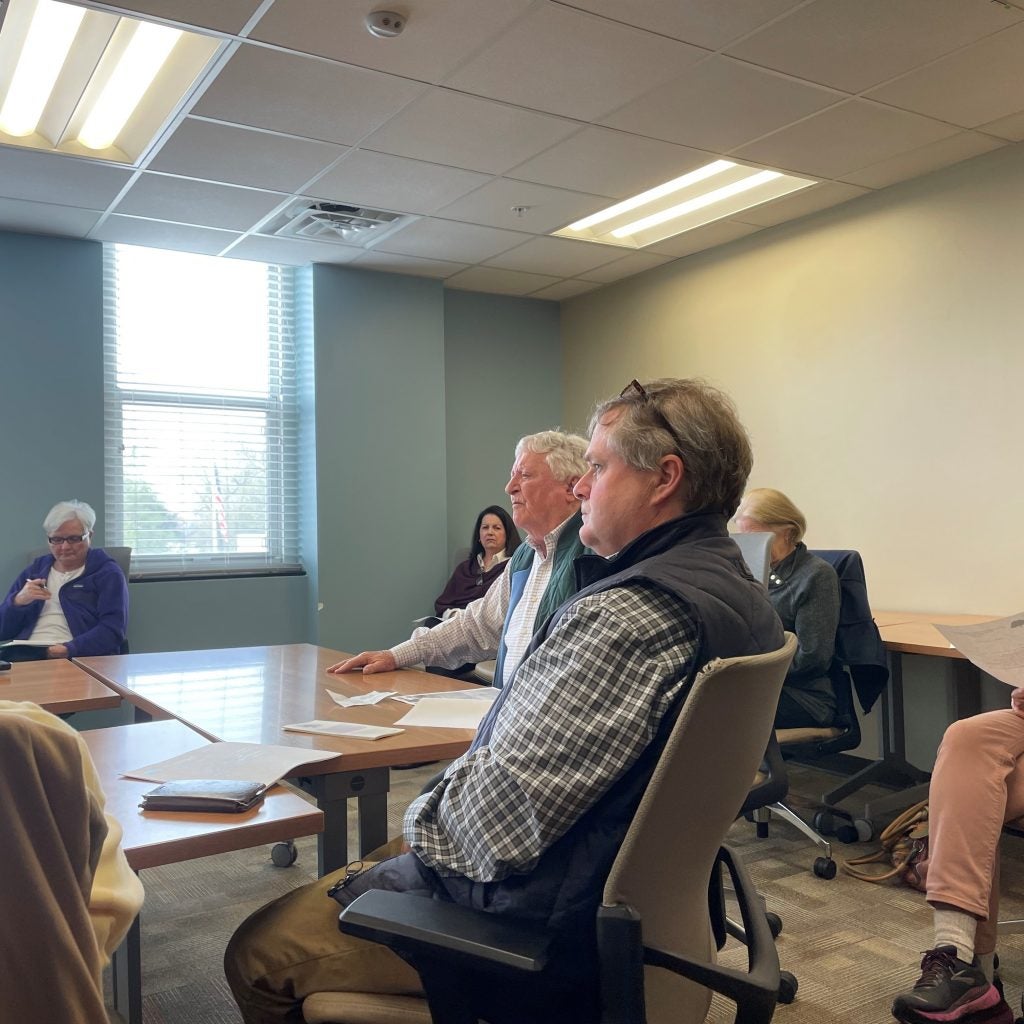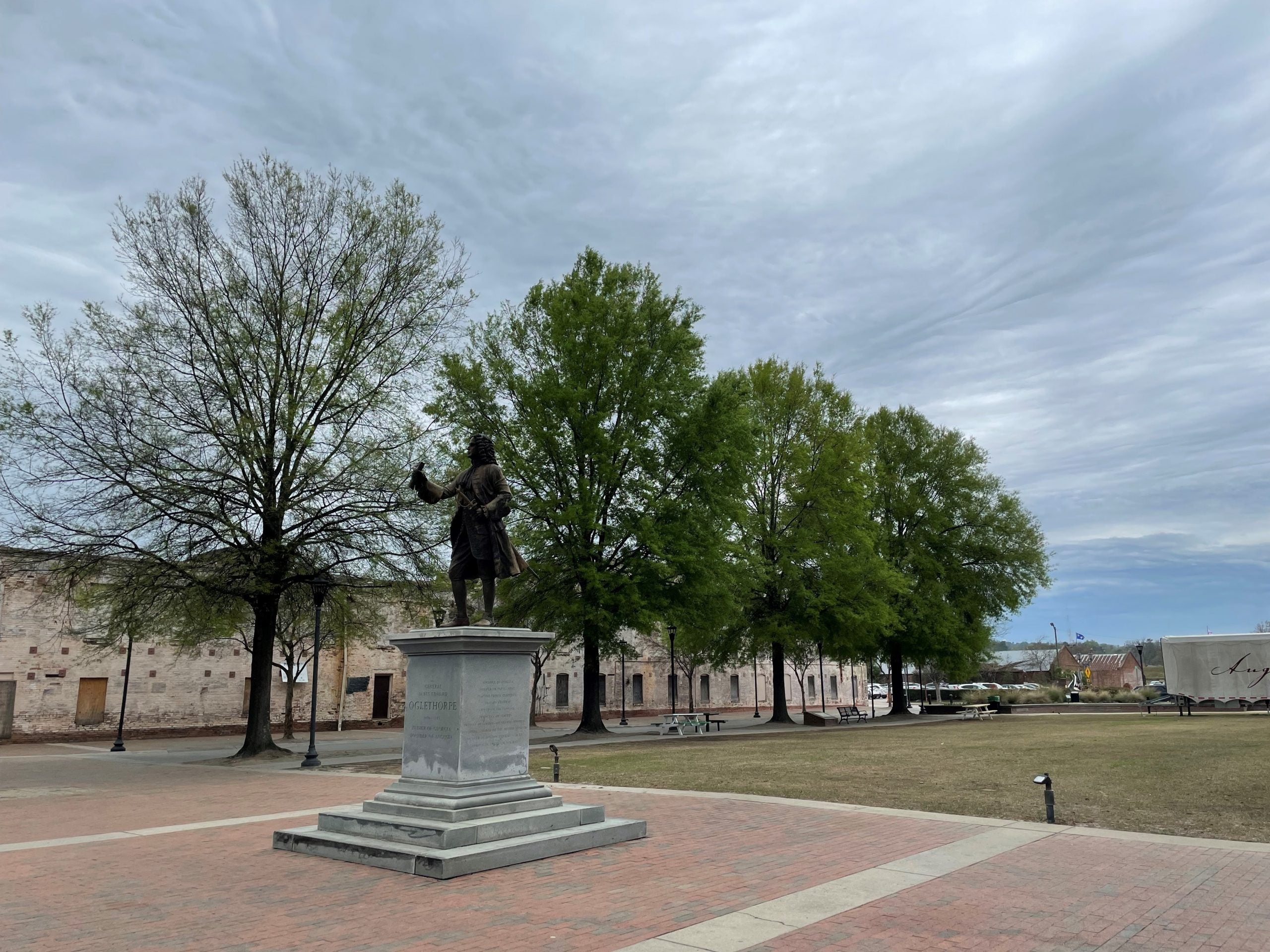The Augusta Tree Commission went head-to-head with Planning and Zoning and Parks and Recreation on Friday morning, kickstarting talks about cutting down the trees on either side of the Augusta Common.
“For a city that claims to be a Tree City USA, a ‘Garden City,’ for 250 years, for those who want to cut the guts out of our downtown beauty and shade, I simply fail to see the logic,” said Augusta Tree Commission Chairman Leroy Simkins.
Planning and Zoning coordinated a special meeting for the Tree Commission and Parks and Recreation on the third floor of the Municipal Building to discuss the possibility of removing all 14 trees from along the greenspace downtown.
[adrotate banner=”51″]
Cranston Engineering Vice President Tom Robertson, who developed the original design for the Common in 1999, addressed several concerns on both sides of the issue before the attendees.
“The purpose of that was to create a linear park that would connect the energy from Broad Street to the Riverwalk,” said Robertson. “That has actually never occurred. Phase One of Augusta Common is what you see today.”
Robertson noted that willow oak trees along the park, now 20 years old, were supposed to be part of a design in which the park reached all the way to Riverwalk, to be reminiscent of similar spaces in Paris. Willow oak was chosen, he said, because it’s a canopy tree, living up to 300 years, offers shade in the summer and gives way to sunlight in winter after losing its leaves. Bermuda grass is used for the ground for its durability, but Robertson noted that it’s a “sun-loving grass.” He pointed out that the area was designed like a golf green, with under drainage and specialized soil, and that the grass could use some aeration.
Robertson said that he examined the Common on Wednesday, and that it was “beginning to look like it’s supposed to,” though the sidewalks had been uneven in places, which could cause tripping hazards.
“It seems like an alternate solution would be to replace the sidewalk rather than cut down the trees,” he said, before conceding that the decision would be up to the city.
The prospect of removing the trees was traced back to a proposal by Commissioner Sean Frantom, who did not attend Friday’s meeting. Commissioner Catherine Smith-McKnight did attend. She was unambiguous in her position against removing the trees and agreed with Simkins that an arborist should be involved with either Engineering, Planning and Zoning or Parks and Recreation to provide expert input.
“I’m totally against trees being removed,” McKnight said. “You go to Savannah, you go to Hilton Head, you see pines. They have trees everywhere. They have roots all over and the people don’t complain, they love it. We need to keep it, and I will be totally against it on the Commission.”
As the meeting moved forward, the question was raised as to which department would be responsible for making and implementing any decision regarding the trees.

“Is Parks and Rec in charge?” said landscape architect Wright Montgomery, of the non-profit Trees for Augusta. “Who’s in charge of public, right-of-way trees in parks? Is it engineering? Why aren’t they here? I think everybody’s here because they don’t feel like the city has a plan in place for dealing with and maintaining what we have.”
Ben Brewton, an attorney with the Balch & Bingham law firm and treasurer for Trees for Augusta, interjected, saying that the City of Augusta had essentially waged a “war on trees.”
“The City of Augusta does have a plan for street trees, and the plan is that no more are to be planted,” said Brewton. “We’ve dealt with the engineering department, and they’ve made it fairly clear: don’t come to us to replace trees along tree lined streets in Augusta, because we’re not going to approve the replacement of that.”
Amid suggestions of hiring expert consultants to assess alternatives to removing trees as well as tending the grass, Tim Fulton, deputy director of Parks and Recreation, stressed that the price tag on any decision must be considered, from tree removal on one hand to root pruning or adding structures to prevent roots from growing out on the other.
[adrotate banner=”15″]
“Part of my task is to gather the information,” said Fulton. “We’ve got great ideas coming in this room, but the bottom line is we’ve got to be looking at numbers, too. What can we afford to do as a city.”
No official decisions were made at the meeting. Maurice McDowell, director of Parks and Recreation, said that meeting was primarily about fostering communication and assessing community thoughts on the issue. He called the discussion a “learning experience” and indicated that the matter would be addressed in a public hearing before the Commission.
“Part of the dialogue here is we’re learning things,” said McDowell. “And as we gain this information, it puts the department in a better position to go back before the body and say, ‘Here’s some things you want to take into consideration based upon some of the stuff that we learned from this meeting.’”
Skyler Q. Andrews is a staff reporter covering education in Columbia County and business-related topics for The Augusta Press. Reach him at skyler@theaugustapress.com.











